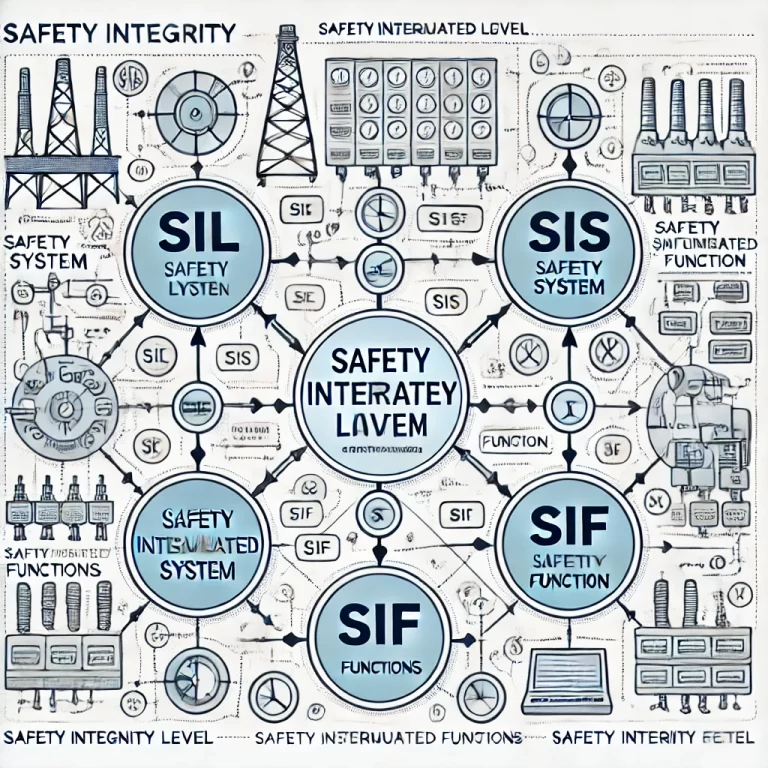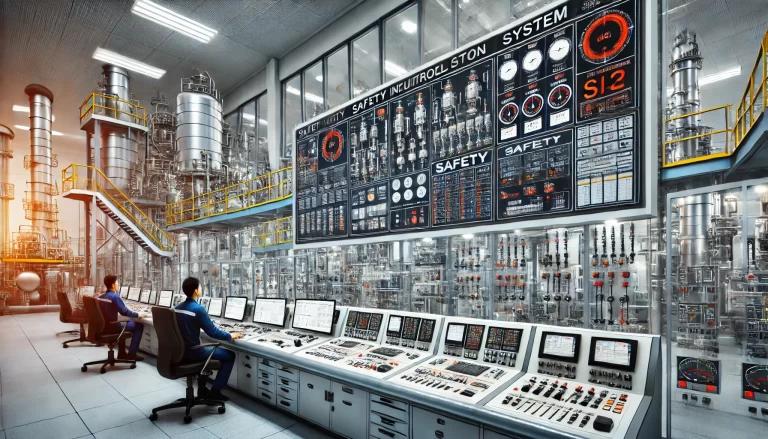1. What Is SIL?
SIL stands for Safety Integrity Level, a key concept defined in the international functional safety standard IEC 61508. It represents the level of risk reduction provided by a Safety Instrumented Function (SIF). SIL is typically used to describe the reliability and effectiveness of Safety Instrumented Systems (SIS) in preventing hazardous events.
Although the acronym already contains the word “Level”, it is common in industry to say “SIL level”, much like how “P&ID diagram” is commonly used even though “D” already stands for “diagram”.

2. SIS Operating Modes Defined by IEC 61508
IEC 61508 classifies SIS operating modes into three categories, each with different implications for SIL assessment:
Low Demand Mode:
The safety function is performed only upon demand, with demands occurring no more than once per year.High Demand Mode:
The safety function is performed upon demand as well, but at a higher frequency, i.e., more than once per year.Continuous Mode:
The safety function is active continuously and forms an integral part of normal operation, such as continuous control to prevent unsafe conditions.
⚠ In the petrochemical industry, Safety Instrumented Systems almost always operate in Low Demand Mode, as stated in GB/T 50770-2013, and the highest SIL required is generally SIL 3.

3. SIL and PFDavg: The Mathematical Relationship
In Low Demand Mode, SIL is directly linked to PFDavg — the Average Probability of Dangerous Failure on Demand. This is the average unavailability of the SIS when it’s required to act, essentially representing the risk of system failure upon demand.
Below is the typical correspondence table:
| SIL | PFDavg Range | RRF (Risk Reduction Factor) | SA (Safety Availability) |
|---|---|---|---|
| SIL 1 | ≥ 10⁻² to < 10⁻¹ | 100 ~ 10 | 90% ~ 99% |
| SIL 2 | ≥ 10⁻³ to < 10⁻² | 1,000 ~ 100 | 99% ~ 99.9% |
| SIL 3 | ≥ 10⁻⁴ to < 10⁻³ | 10,000 ~ 1,000 | 99.9% ~ 99.99% |
| SIL 4* | ≥ 10⁻⁵ to < 10⁻⁴ | 100,000 ~ 10,000 | 99.99% ~ 99.999% |
📌 *SIL 4 is rare and generally used in extremely high-risk environments such as nuclear power or aerospace.
Formulas for reference:
RRF = 1 / PFDavg
SA = 1 – PFDavg
Example Calculation
If a SIF has a PFDavg of 2.5 × 10⁻³, then:
RRF = 1 / (2.5 × 10⁻³) = 400
SA = 1 – 0.0025 = 99.75%
In this case, it would qualify as a SIL 2 level protection loop.

4. Common Misunderstandings in SIL Application
There are several industry misconceptions about SIL that are worth correcting:
❌ “This plant has a SIL 3 SIS.”
✅ Correct: SIL is assessed per SIF (Safety Instrumented Function), not the entire SIS. The statement likely refers to the use of a SIL 3 certified logic controller in the SIS.❌ “This instrument is SIL 2.”
✅ Correct: Instruments do not have a SIL rating by themselves. Instead, we say that an instrument is capable of being used in a SIL 2 SIF, based on its systematic capability and hardware fault tolerance.

5. Conclusion
Understanding the relationship between SIL and PFDavg in Low Demand Mode is essential for safety professionals and control engineers. Not only does it provide a quantitative basis for risk reduction, but it also guides proper selection, integration, and validation of safety systems and field devices.
✅ Always remember: SIL applies to functions, not devices, and the correct application of standards like IEC 61508 and IEC 61511 is key to ensuring functional safety in hazardous processes.
